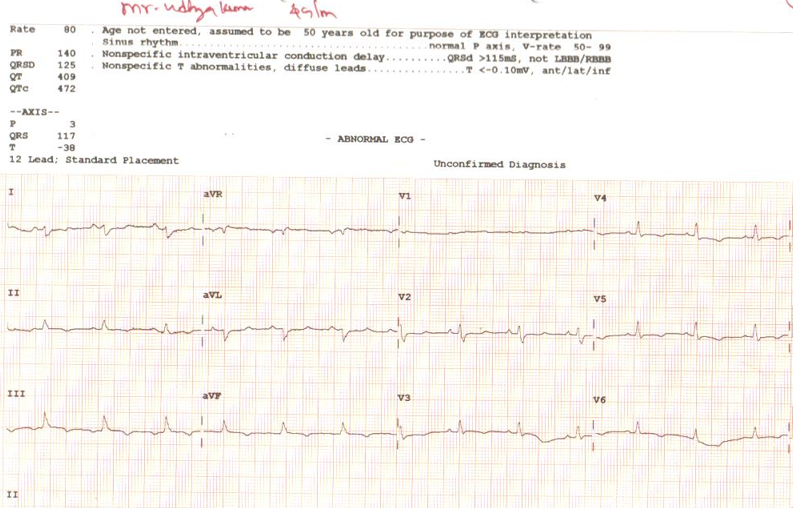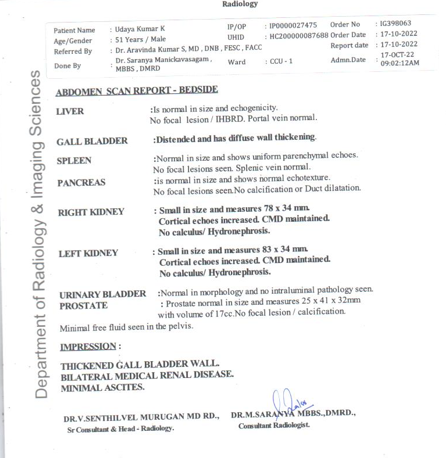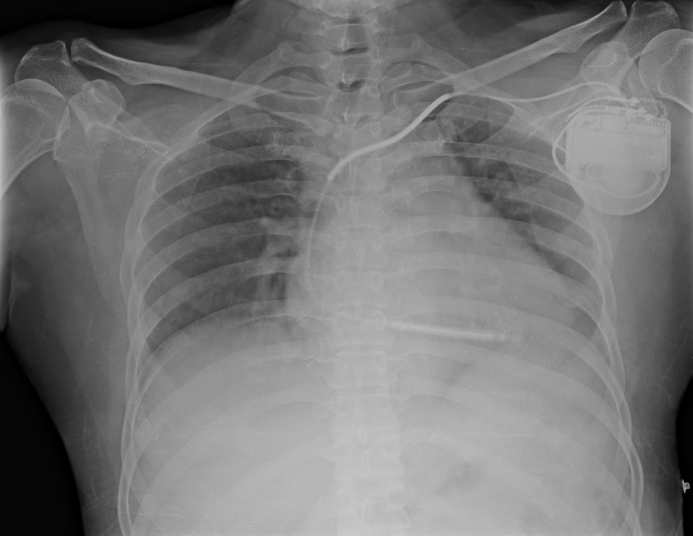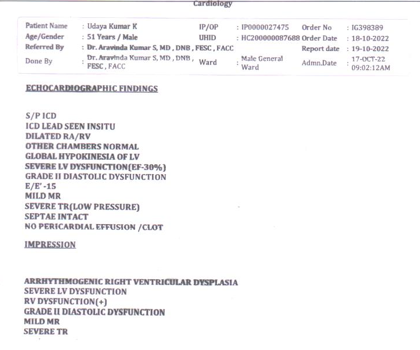Vijayalakshmi1, Ambiga
Nursing Incharge, Kauvery Heartcity, Trichy
Senior Staff Nurse, Kauvery Heartcity, Trichy
*Correspondence: +91 8508698000; nursing.heartcity@kauveryhospital.com
Arrhythmogenic Right Ventricular Dysplasia: A Cardiomyopathy
Background
Arrhythmogenic Right Ventricular Cardiomyopathy (ARVC), is a leading cause of sudden death among young athletes but it can affect people of all ages and all activity levels.
Case Presentation
A 51-year-old male came with complaints of chest pain for 2 days. He had a past history of breathlessness since 2011. The patient was already diagnosed with Arrhythmogenic Right Ventricular dysplasia and an Implantable Cardioverter Defibrillator was installed in 2011 at a hospital in Chennai. Pulse Generator (PG) replacement was done in 2018. He was also had chronic kidney disease (CKD) for the past 10 years.
Symptoms
Complaints of chest pain – left arm pain, dyspnea on exertion and palpitation.
Vital Sign
BP: 130/80 mmHg, HR: 90 bpm, CVS: S1S2+, RS: BAE +, P/A: Soft, CNS: within normal limits.
Investigation
- ECG – ST depression in inferior leads
- ECHO – Global hypokinesia with severe LV Dysfunction.
- Trop T – Positive
- NT pro-BNP – 9068 ↑
- LFT – Bilirubin – 1.69↑: SGOT – 281↑U/L: SGPT- 258↑ U/L
- Urea: 69.0↑ mg/dl, Creatinine – 2.49↑ mg/dl
- K+ – 6.88↑
- USG abdomen – Thickened gall bladder wall. Bilateral renal disease. Minimal ascites.
ECG

Note: Rt Axis deviation, pointed P waves, T inversion in lateral leads
USG abdomen

X-Ray report

Cardiomegaly, ICD in situ
ECHO

Diagnosis
- Arrhythmogenic right ventricular dysplasia
- Coronary artery disease, ACS-NSTEMI
- Severe biventricular dysfunction
Medications at discharge
- Tab. Clopidogrel 75mg 0-1-0
- Tab. Bisoprolol 5mg 0-1-0
- Tab. Torasemide 5mg 1-0-0
Nursing care
- Patient was shifted to Critical Care Unit with a duty doctor and continuous cardiac monitoring.
- Nurses skilled in IV infusion and blood sampling techniques (Phlebotomy) obtained the samples for blood investigations like (CBC, ESR, Sodium, Potassium, etc.) with a sterile technique to prevent thrombophlebitis.
- Doctors explained the patient’s condition to the attenders. Nurses obtained consent for the clinical procedures after proper counselling.
- Nurses used AIDET technique (acknowledge, introduce, duration, explanation and thank you) while communicating with patients and attenders to gain their confidence and improve their satisfaction level.
- Physical examination was done for identifying peripheral edema and ascites.
- Evaluated patient’s chief complaints which may include fever, syncope, general aches, fatigue, palpitations and dyspnea.
- Auscultated lung sounds for crackles (pulmonary edema) or decreased sounds (pleural effusion).
- Assessed heart size through palpation of chest for point of maximal impulse and auscultate for abnormal sounds.
- Evaluated cardiac rhythm and ECG for evidence of atrial or ventricular enlargement and infarction.
- Monitored the patient’s condition for developing heart failure.
- Continuous monitoring of heart rate and rhythm.
- Restriction of the patient from mobilization during the development of ARVD symptoms.
- Monitored the urine output according to intake level.
Monitored the side effects of beta-blockers and arrhythmic drug.
Discharge advice
- Do not skip the medication
- Advise changing lifestyle to reduce participation in athletics.
- Advice for regular check-up.
- Advice for physical exercise and relaxation therapy.
- To create awareness about the condition of ARVD / ARVC.
- Avoid alcohol, tobacco and smoking
- Eating healthy foods.
- Avoid caffeine.
- Staying at a normal weight
- Limiting strenuous physical activity.
- Low salt and low-fat diet.
- Fluid restriction as per doctor advice.
- Observe for breathing difficulty and pedal edema.
Recovery
Finally, following admission to the hospital, the patient became stable with the efficient care of nurses and doctor’s advice. Planned for cardiac transplantation

Ms. G. Vijayalakshmi
Nursing In charge

Ms. Ambiga
Senior Staff Nurse
